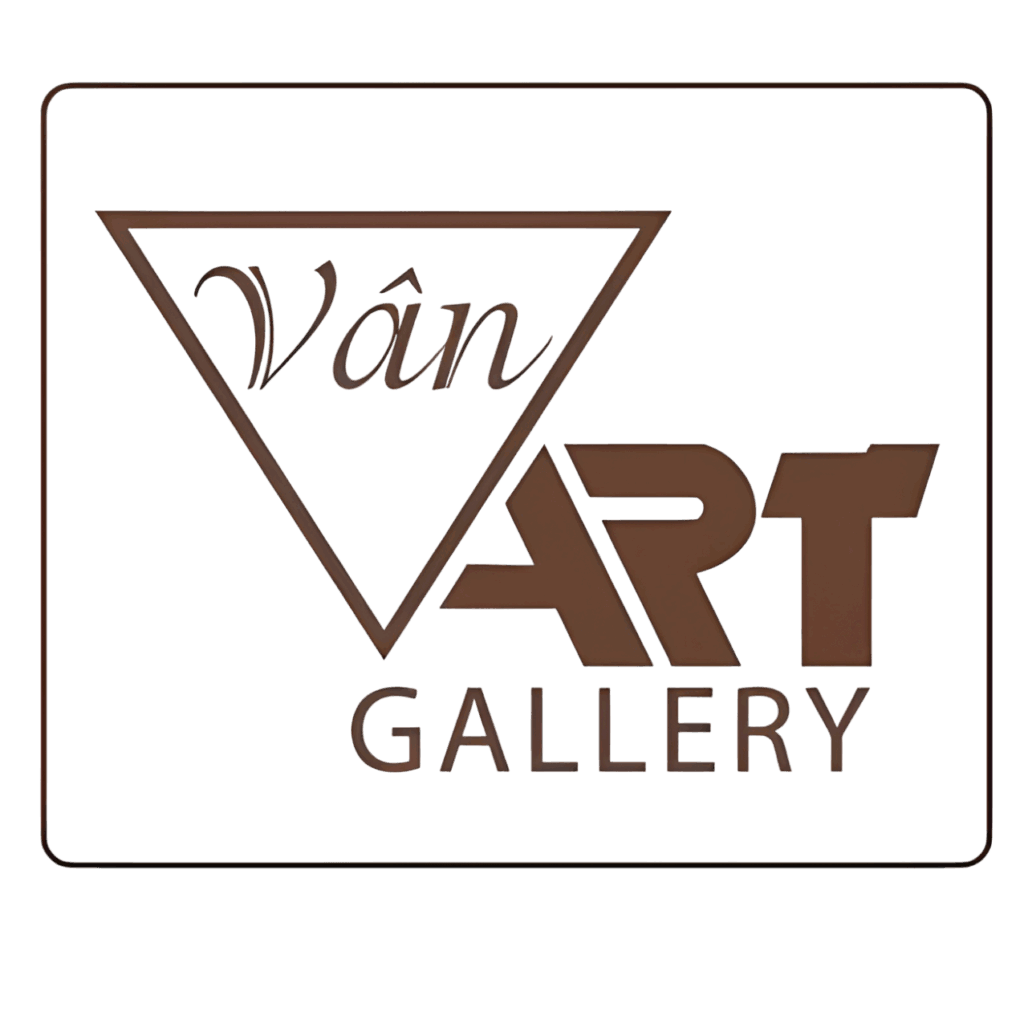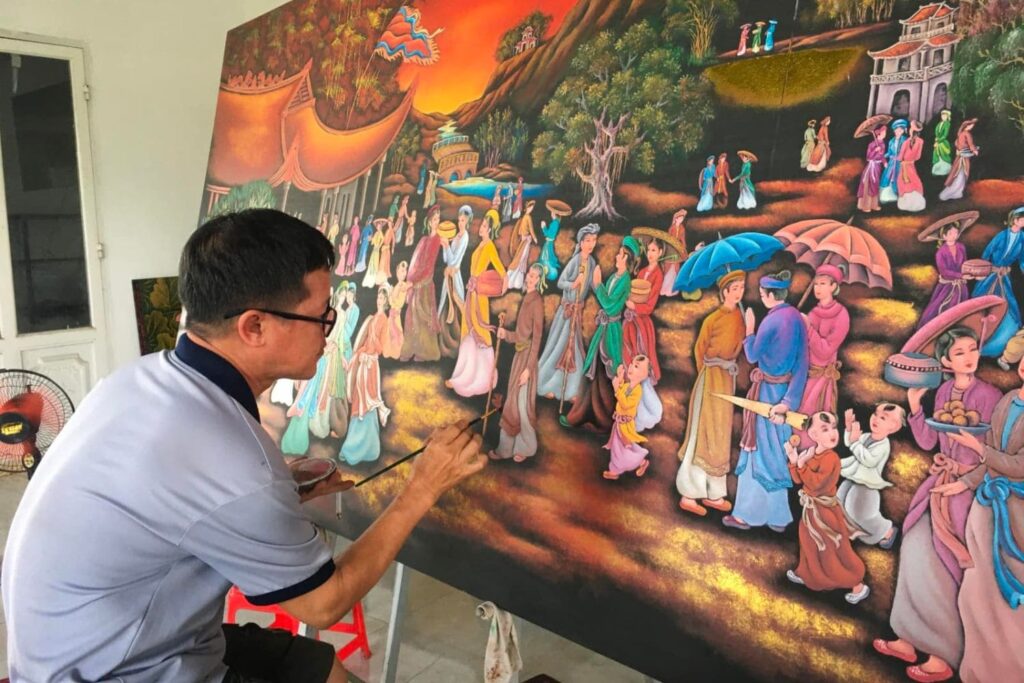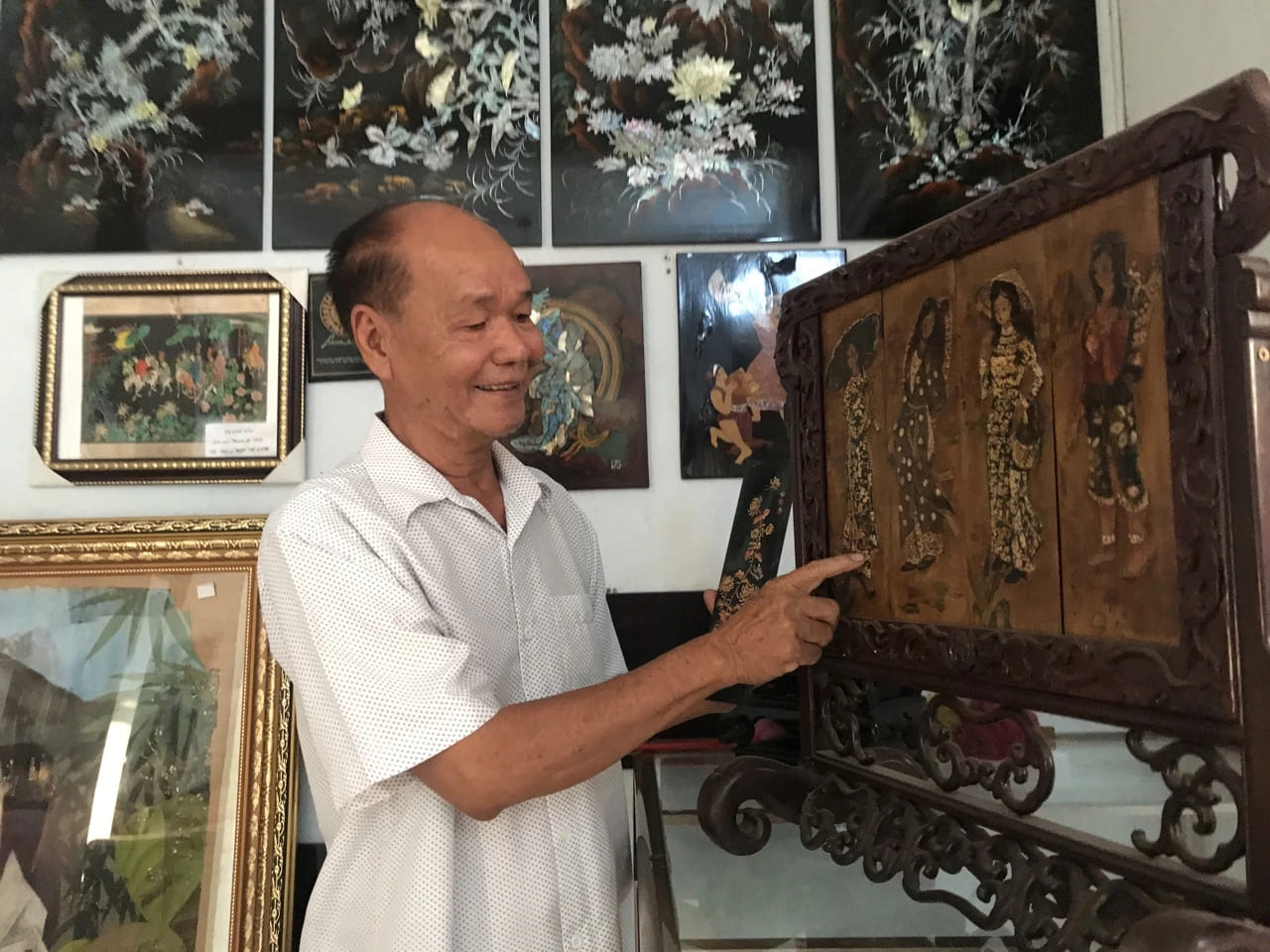Vietnam’s famous lacquer painting villages are cultural gems, preserving the centuries-old art of lacquer painting. From Ha Thai (Hanoi) to Tuong Binh Hiep (Binh Duong) and Cat Dang (Nam Dinh), these villages craft breathtaking lacquer paintings and artisanal products that captivate art lovers in Vietnam art galleries worldwide. This article explores the history, techniques, and value of these renowned lacquer painting villages, offering a deeper look into Vietnam’s rich cultural heritage.
Origins and Features of Vietnam’s Lacquer Painting Villages
Lacquer painting in Vietnam is an art form using sap from the native lacquer tree, blended with materials like gold, silver, and eggshells to create durable, soulful masterpieces.
What Are Vietnamese Lacquer Paintings? Key Features
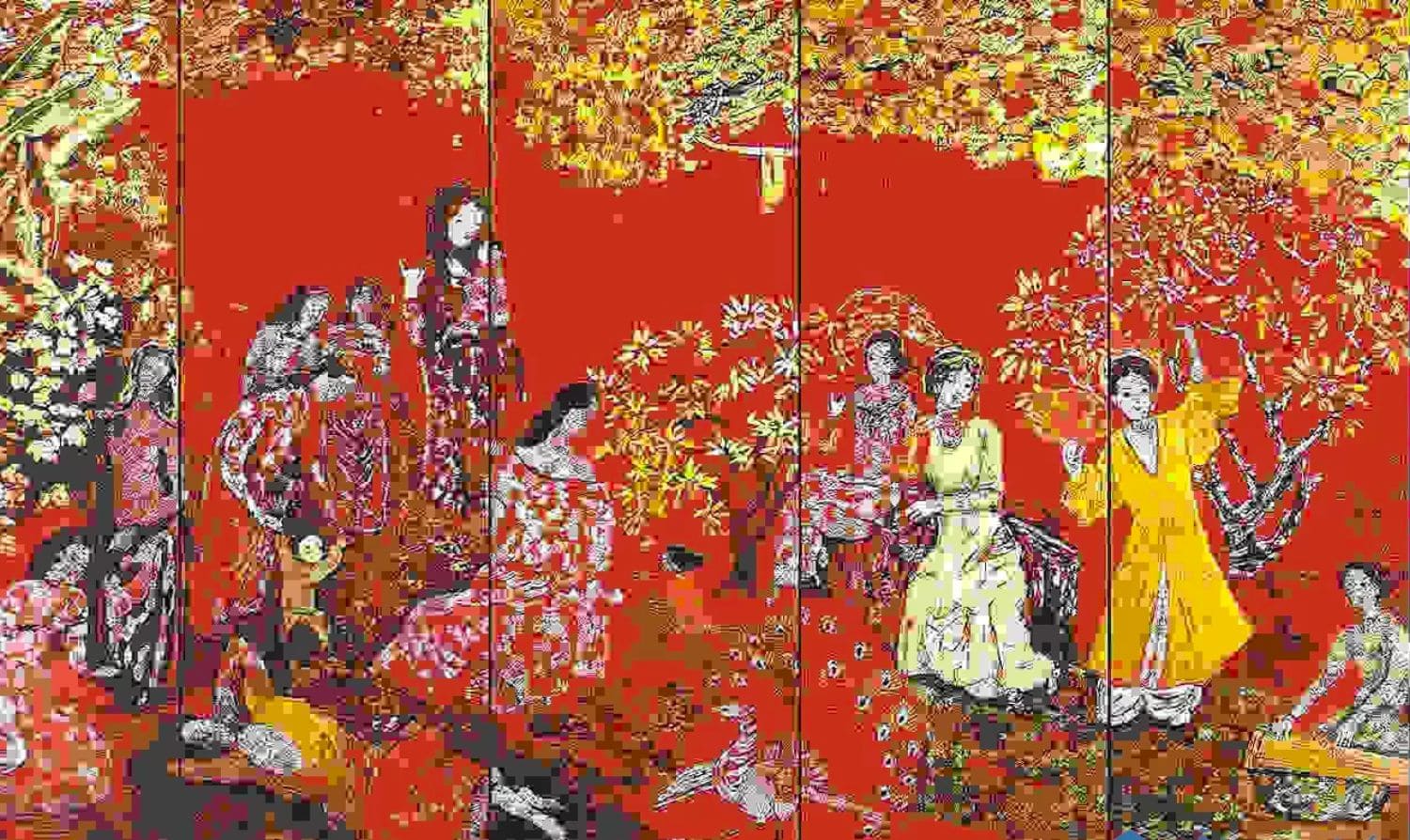
Lacquer paintings are crafted from the sap of the Toxicodendron vernicifluum tree, applied in layers over wood, bamboo, or ceramics, then polished for a glossy, durable finish. Key characteristics include:
-
Distinctive Colors: Traditionally black, red, and brown; modern works incorporate green, white, and gold.
-
Complex Techniques: Layering sap, polishing, and inlaying mother-of-pearl or gold require meticulous skill.
-
High Durability: Resistant to moisture and cracking, lasting centuries.
-
Versatility: Used for paintings, household items, or ceremonial plaques and couplets.
Vietnamese lacquer paintings stand out globally, distinct from Chinese or Japanese styles due to innovative inlays and vibrant modern colors.
Role of Lacquer Painting Villages in Vietnamese Culture
Lacquer painting villages do more than create art—they safeguard Vietnam’s cultural identity:
-
Religious Significance: Crafting Buddha statues and ceremonial plaques for temples.
-
Decoration: Producing landscape paintings and intricate furniture.
-
Global Reach: Lacquer products are cherished in France, the US, and Japan.
These villages bridge tradition and modernity, carrying Vietnam’s soul to the world.
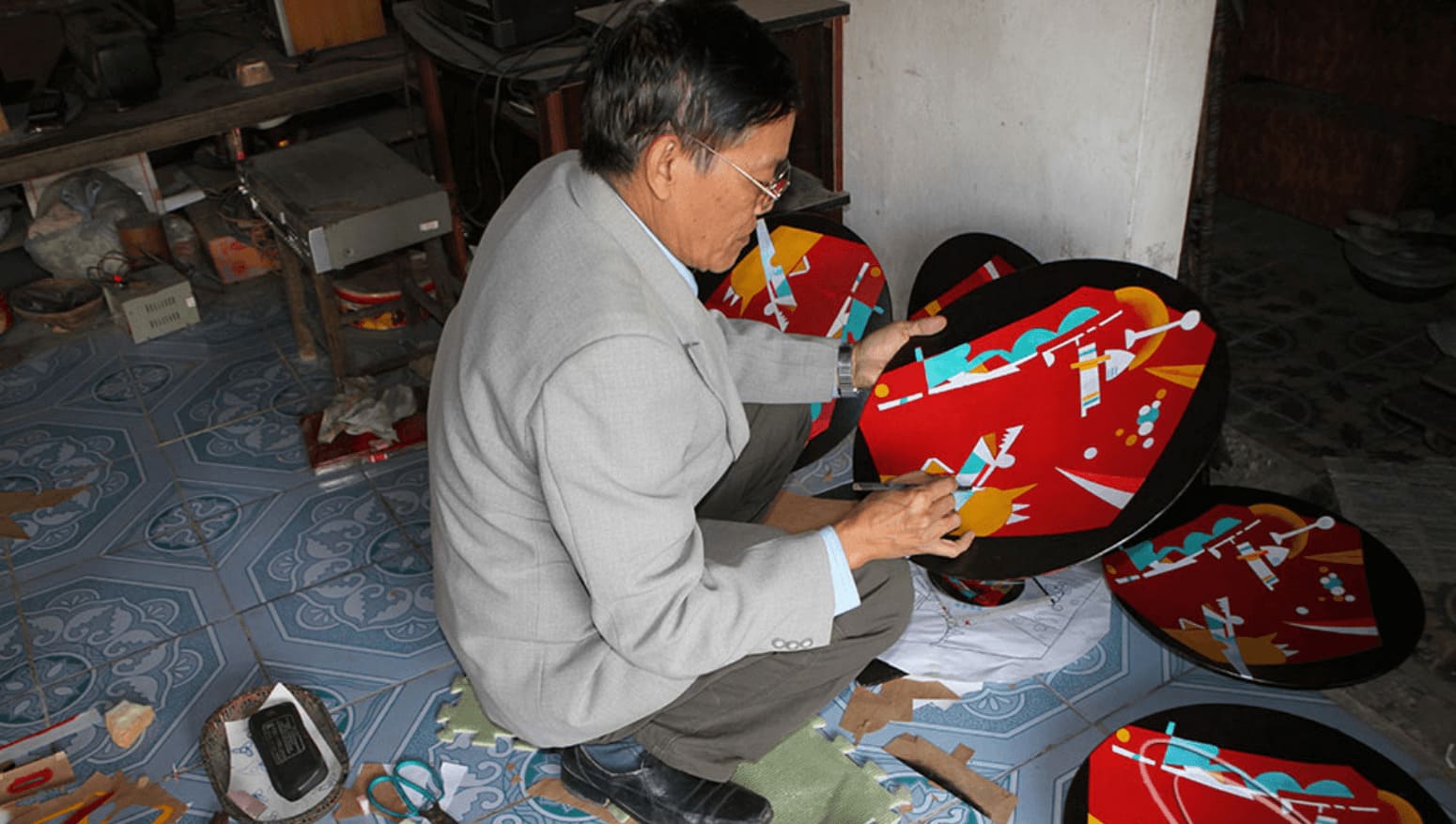
History of Lacquer Painting Villages: A Centuries-Long Journey
The history of lacquer painting villages traces back to the 11th century, evolving through periods of growth and challenge.
History of Lacquer Painting Villages: Key Milestones
-
11th Century: Lacquer art emerged in northern Vietnam, serving royal courts.
-
17th-18th Centuries: Villages like Cat Dang and Ha Thai formed, producing paintings and religious items.
-
20th Century: Tuong Binh Hiep rose, blending modern techniques.
-
Today: These villages export products, promoting Vietnamese culture globally.
The history of lacquer painting villages reflects Vietnam’s resilience and creativity.
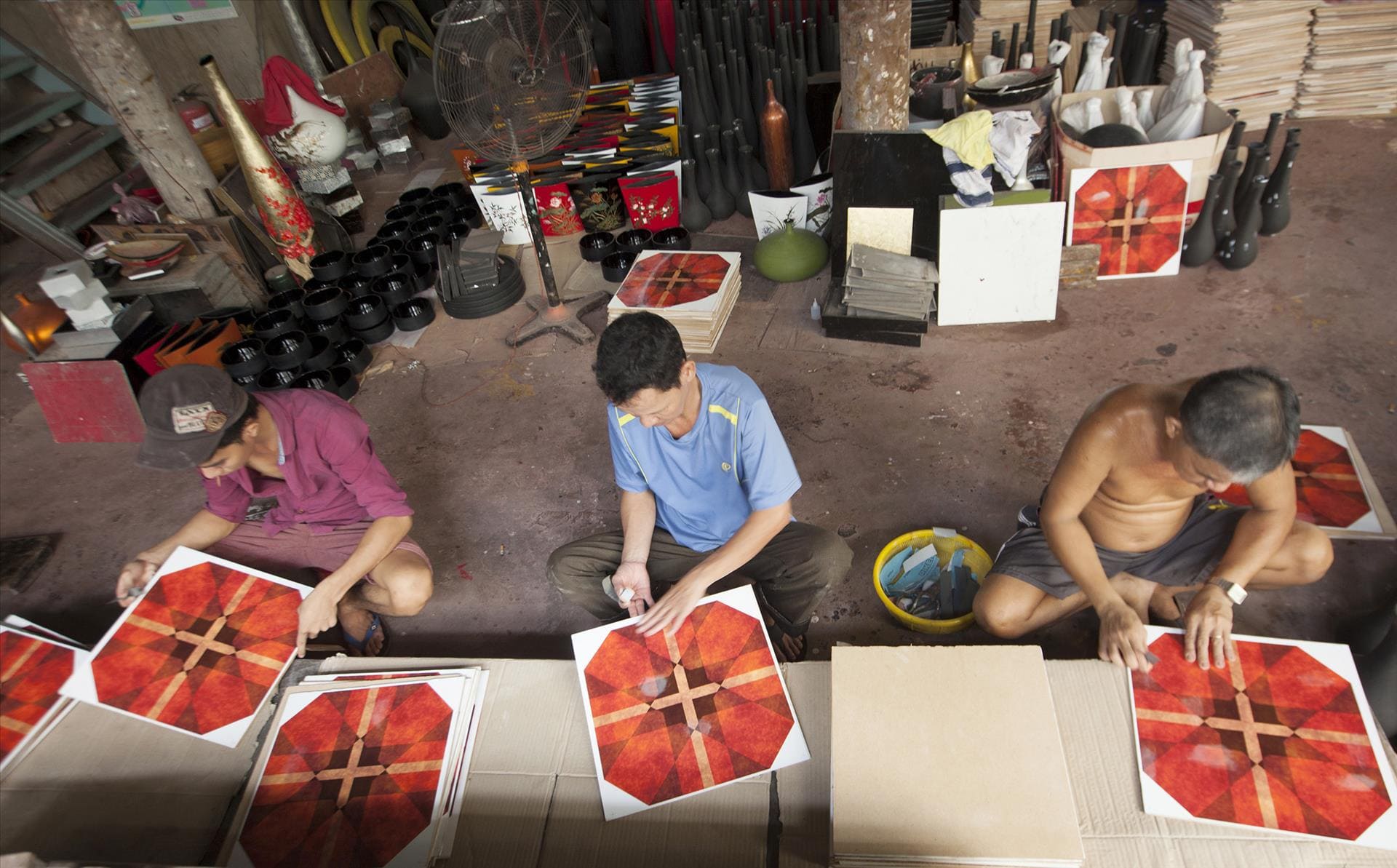
Evolution Through the Ages
-
Feudal Era: Served royalty with ceremonial items and decorative paintings.
-
Early Modern Period: Developed mother-of-pearl and gold leaf inlays, creating a unique identity.
-
Modern Era: Applied lacquer to composite materials and ceramics, expanding global markets.
Top 4 Famous Lacquer Painting Villages: Must-Visit Cultural Spots
Vietnam’s famous lacquer painting villages are cultural destinations where you can admire and purchase unique creations.
Ha Thai Lacquer Painting Village (Hanoi): What Makes It Special?
Located in Duyen Thai, Thuong Tin, Hanoi, Ha Thai is a lacquer hub dating back to the 17th century.
-
History: Originally called Cu Trang, it crafted paintings for royalty.
-
Products: Landscape paintings, vases, bowls, and mother-of-pearl inlaid items.
-
Features: Blends modern colors (green, white) with traditional techniques.
-
Destination: Just 17km from Hanoi, ideal for witnessing the lacquer process.
Ha Thai’s lacquer painting village is renowned for exquisite works exported to France, the US, and Japan.
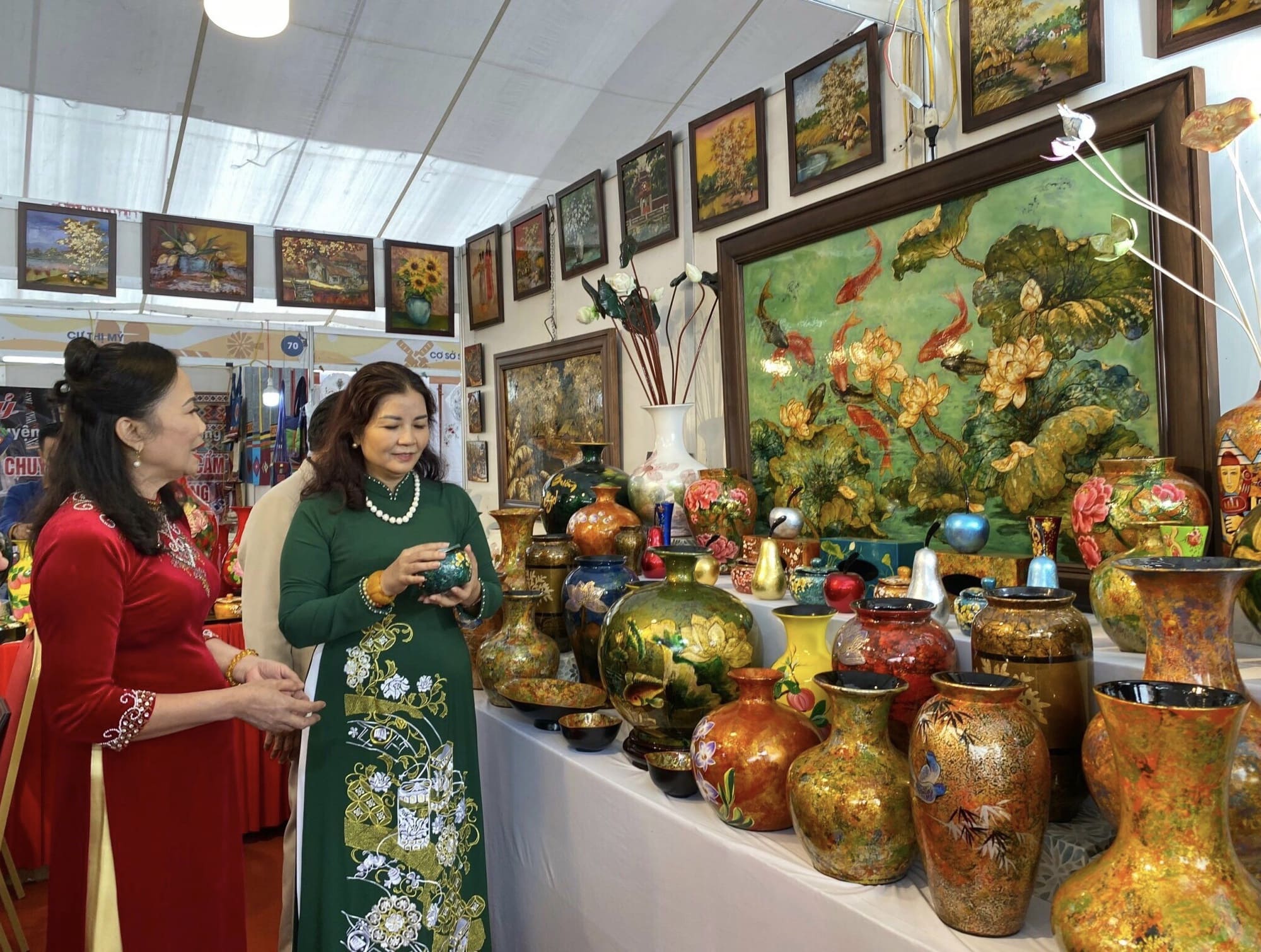
Tuong Binh Hiep Lacquer Painting Village (Binh Duong): Southern Heritage
Situated in Thu Dau Mot, Binh Duong, Tuong Binh Hiep is a historic lacquer village from the 18th century.
-
History: Brought by central Vietnam migrants, thriving since the 1950s.
-
Products: Lacquer paintings, furniture, and bamboo-inlaid boxes.
-
Features: Durable products suited for European climates.
-
Destination: Attracts tourists and international traders, with workshops like Thanh Le.
Tuong Binh Hiep lacquer painting village is a proud symbol of southern Vietnam.
Cat Dang Lacquer Painting Village (Nam Dinh): 600 Years of History
Cat Dang, in Yen Tien, Y Yen, Nam Dinh, boasts over 600 years of lacquer artistry since the 11th century.
-
History: Founded by two Dinh dynasty officials, specializing in thrones, palanquins, and statues.
-
Products: Landscape paintings (palm forests, tea hills) and religious items.
-
Features: Uses lightweight bamboo instead of wood, offering affordability.
-
Secret: Proprietary sap-blending techniques ensure lasting colors, even in rain.
Cat Dang lacquer painting village embodies creativity and endurance.
Boi Khe Lacquer Painting Village (Hanoi): The Cradle of Lacquer Art
Located in Chuyen My, Phu Xuyen, Hanoi, Boi Khe is considered the birthplace of Vietnamese lacquer art.
-
History: Since feudal times, crafting gilded lacquer for temples.
-
Products: Inlaid paintings, bowls, vases, and ceremonial plaques.
-
Features: A 12-layer lacquer process, taking a month per piece.
-
Destination: 35km from Hanoi, known for export-quality products.
Boi Khe lacquer painting village shines with its intricate inlay techniques.
Lacquer Painting Techniques: Crafting Masterpieces
Lacquer painting techniques are the soul of these villages, demanding patience and exceptional skill.
What Are Lacquer Painting Techniques? A 25-Step Process
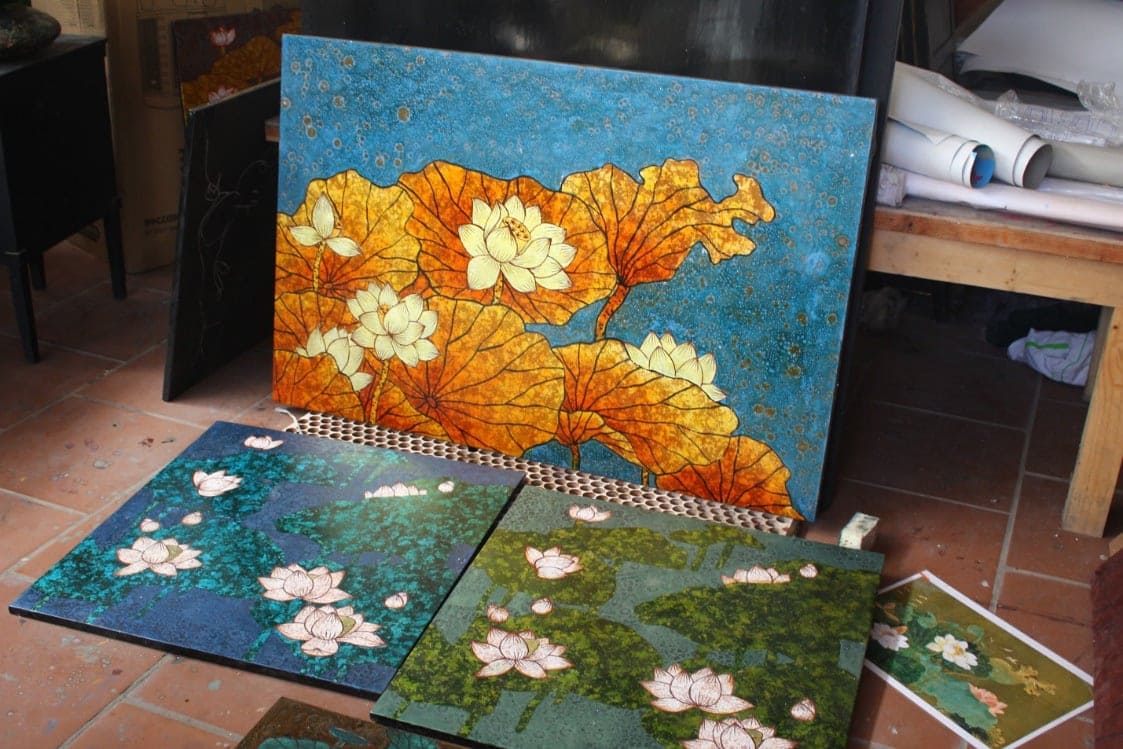
A lacquer artwork undergoes 25 meticulous steps, including:
-
Base Preparation: Using wood, bamboo, or ceramics; bamboo is soaked for six months to prevent termites.
-
Lacquer Application: 6-12 layers of sap, each drying for 3-7 days.
-
Polishing: Stone-grinding to create a smooth, glossy surface.
-
Inlay Decoration: Adding mother-of-pearl, gold leaf, or eggshells.
-
Final Coating: Evenly applied sap to prevent fading, taking 3-6 months.
Lacquer techniques require precision down to the millimeter, especially in sap blending.
Secrets of Lacquer Painting Villages
-
Ha Thai: Modern color blends for vivid landscape paintings.
-
Tuong Binh Hiep: Uses bamboo and rattan for international markets.
-
Cat Dang: Sap formulas that retain color in wet conditions.
-
Boi Khe: High-precision mother-of-pearl inlays for a shimmering effect.
Lacquer Products: From Paintings to Unique Artisanship
Lacquer products from these villages extend beyond paintings to practical, aesthetically pleasing items.
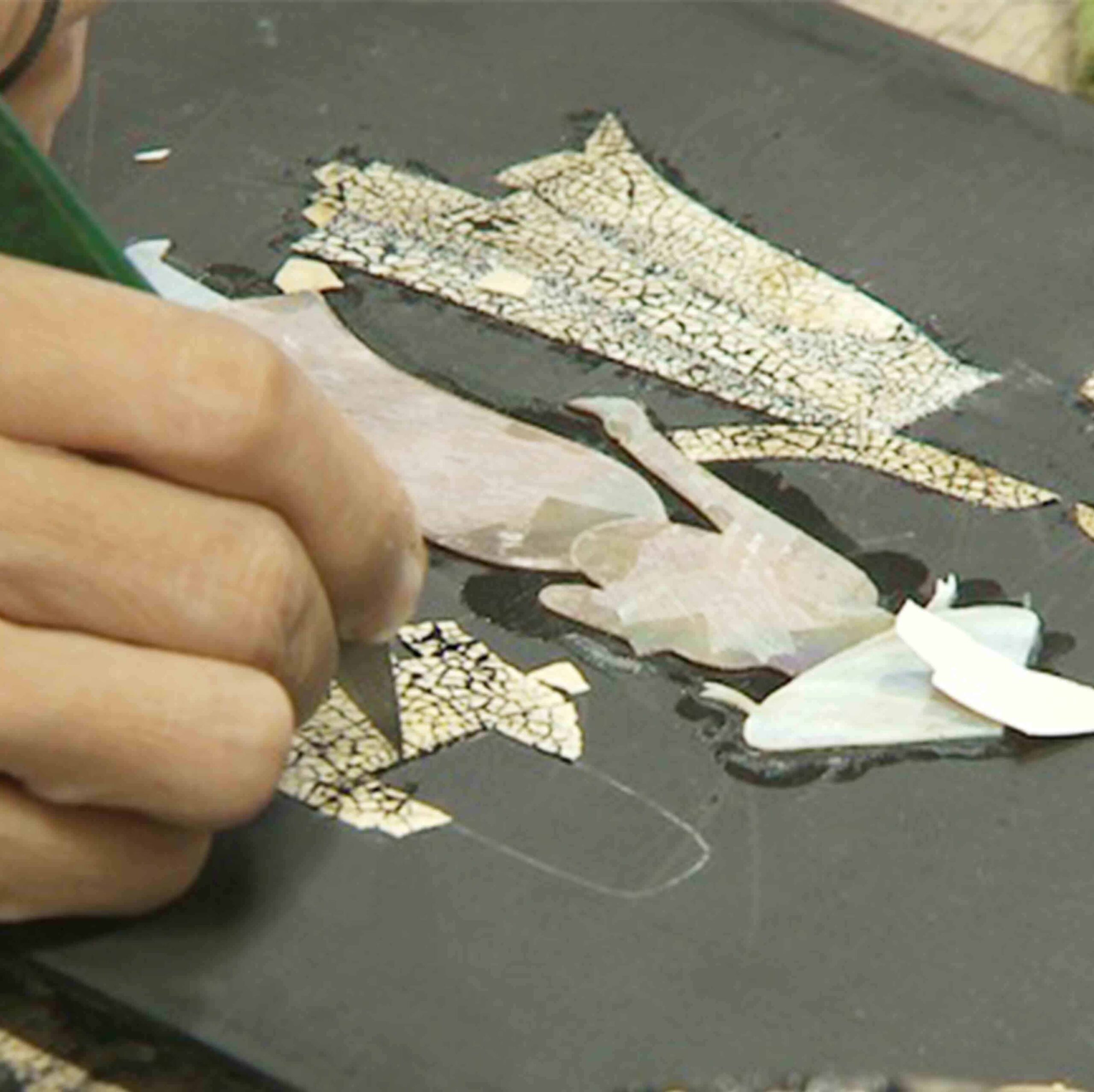
What Are Lacquer Products from These Villages?
-
Lacquer Paintings: Rural landscapes, mythical creatures (dragon, unicorn, tortoise, phoenix), and calligraphy.
-
Household Items: Bowls, trays, vases, and lacquered furniture.
-
Religious Items: Ceremonial plaques, couplets, and Buddha statues.
-
Decorative Items: Lacquered boxes and mother-of-pearl inlaid vases.
Lacquer products are adored in the US, France, and Japan for their durability and beauty.
Applications of Lacquer Products in Daily Life
-
Interior Decor: Enhances restaurants and hotels with elegant touches.
-
Gifts: Lacquer paintings or boxes make premium souvenirs.
-
Exports: Meet the high standards of European and American markets.
Tips for Visiting Lacquer Painting Villages
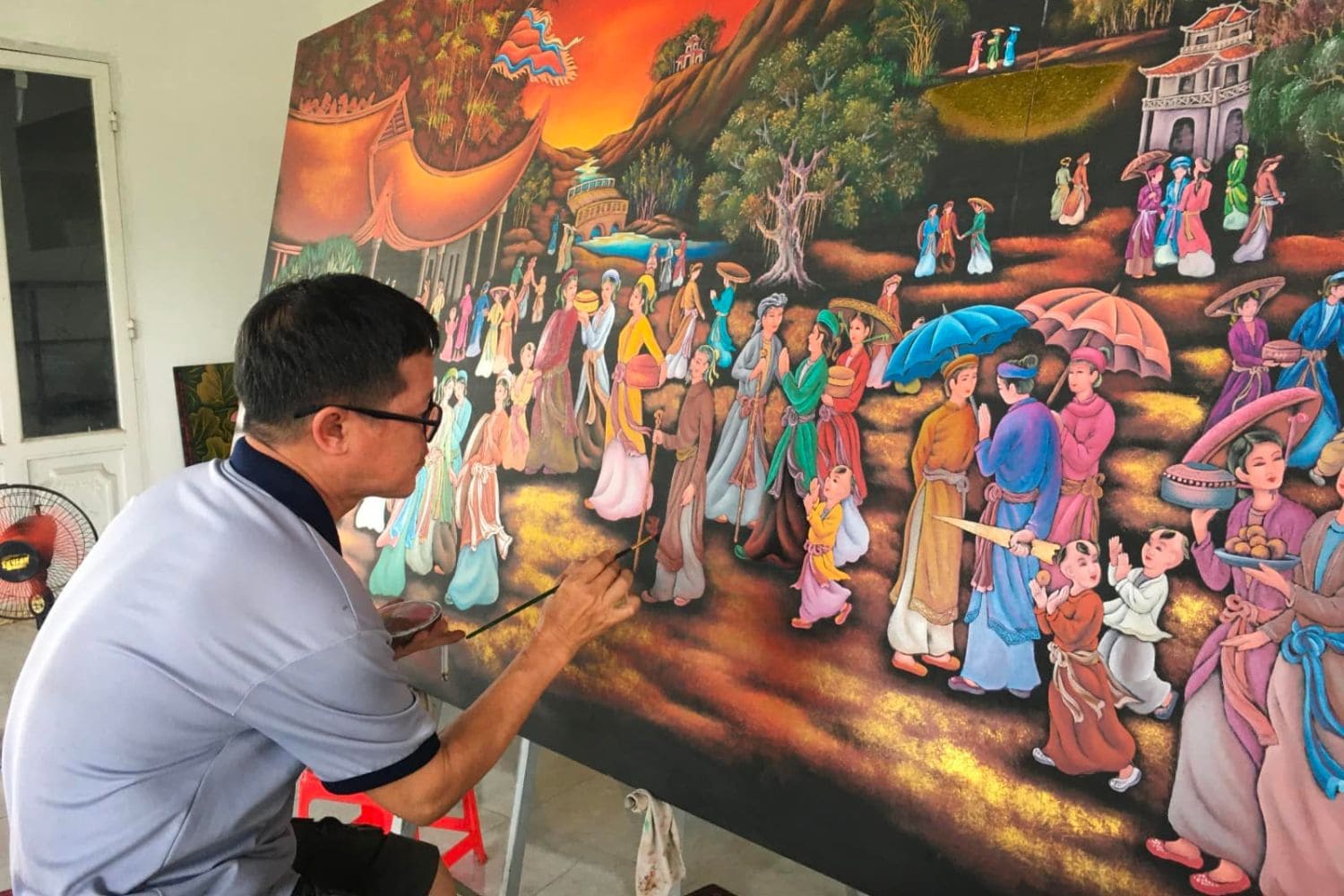
Planning to explore these famous lacquer painting villages? Here are practical tips:
-
Choose the Right Time: Visit during the dry season (October-April) for easy travel.
-
Witness the Process: Head to Ha Thai or Tuong Binh Hiep to see artisans at work.
-
Buy Products: Select paintings or household items from reputable workshops.
-
Learn the Culture: Ask artisans about the history and techniques.
These lacquer painting villages are perfect for culture and art enthusiasts.
Legacy of Lacquer Painting Villages: Vietnam’s Cultural Pride
Famous lacquer painting villages not only preserve traditional artistry but also elevate Vietnamese culture globally. From Ha Thai to Cat Dang, each village tells a story of patience, creativity, and love for art.
Visit a lacquer painting village or purchase a painting to feel Vietnam’s soul! Which village intrigues you most? Share in the comments below!
